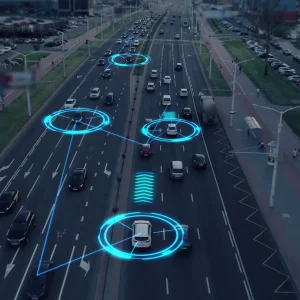The phrase ‘risk management’ is drilling its way into corporate operations with increasing ferocity – and at-work drivers are at the top of the agenda.
Buying into a driver monitoring system is a solid way to cover your back, but there’s always a cost attached and a question mark always hangs over smaller fleets in particular as to whether or not it’s worth the payout.
TomTom Business Solutions’ sales director, Giles Margerison, explains to BusinessCar that the process of driver monitoring was dramatically accelerated in 2001 in the wake of one of the worst rail accidents in modern times: “The history of this starts with the Selby rail disaster when a guy fell asleep at the wheel and caused a huge train crash. Health and safety executives took a cold, hard look at it and found that driving for work was the biggest corporate killer – more than construction, diving etc.”
He continues: “There are about 3500 deaths a year on the roads in the UK at the moment – a third of that is working drivers. We’ve reduced our road deaths every year – until 2012. There’s an assumption that this is to do with people playing with smartphones and things like that but it hasn’t been proven yet. Criminal manslaughter charges are being levied against companies now, with directors going to jail, so it’s serious stuff.”
Despite the horror stories and the fact that there is a very real case for keeping an eye on at-work drivers – and not in the Big Brother sense – integrating it into the operation of a fleet isn’t necessarily the most straightforward process.
Viability
The size of your operation will ultimately dictate what you’re after, but according to managing director of Fleet Risk Consultants, Nigel Grainger, you don’t have to be a blue-chip organisation with a four-figure fleet to make monitoring worthwhile.
“If you’ve just got a team of five then it’s viable,” he says. “Anything upwards of that makes sense if you have people out on the road; if you have a team of 40 people sat in an office then it makes no sense at all, but if there are five sales people going up and down the country, you need to know where they are.”
Grainger claims that the best implementations of telematics systems are the examples where businesses have specified what they want to gain from the service before they buy into it – otherwise, it’s a fruitless exercise: “The key is to work out what you want to know. If you don’t know why you’re doing it then you’re wasting time and money. It really does come down to what your goal is and what you want to achieve. If you only want to know if everybody got home at the end of a shift then you don’t need a complicated system, but if you want to monitor fuel you’ll need a more advanced one.”
In terms of seeing a return on investment, use a telematics package properly and you can shave vast sums of cost off your bottom line. Margerison cites one client that saved almost £80,000 in insurance spend: “We have one customer – Zenith Hygiene – which has a 120-unit fleet and was paying a quarter of a million a year on fleet insurance. After seven months they got a £60,000 reduction in the premium, then they changed insurers in year two and got a further £28,000 reduction. Their personal driver excess has also reduced significantly.”
It’s said that the technology is now becoming more affordable, too. An increase in the number of mobile- and smartphone-based systems has muscled the traditional, wired black box aside as the only option on the market, as well as making it cheaper and easier to employ.
Nigel Trotman, strategic fleet consultant at Alphabet, explains: “It’s quite an interesting time. we’ve seen a number of new products based on things like smartphones that are bringing the cost down. Customers are often reluctant to spend £15, £20, £25 a month on a telematics system. Making the case for spending that much money per month just on driver behaviour is difficult to justify, but there’s also dongle-type technology available now, so that, along with smartphones, is bringing the cost down.
“That opens it up to small fleets. If your drivers are all equipped with smartphones then that will stack up. If you’ve got a big fleet then you’ve got more to do, so a fixed system might make more sense.”
Trotman believes that the mobile driver monitoring aspect is the way that all of the industry is moving and is effectively the first rung on the ladder before we see fully integrated telematics in cars as they leave the factory. “My view is that there will be the equivalent of a smartphone in every vehicle in the not too distant future and driver behaviour will be an app,” he says. “It will all be accessible. The challenge for this is common technology – every manufacturer will want to make their technology common to them.”





